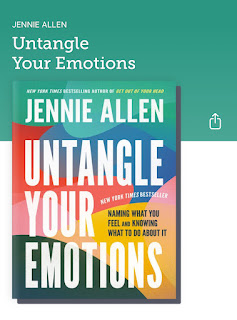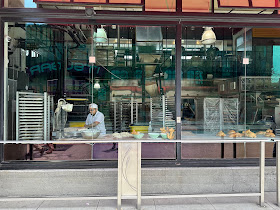I am back to reading! Our vacation helped me fit in a few books, and after that, I made steady progress, helped along by a second road trip we just ended. I am trying to read some different books, more life books than chick-flick romance. Don't get me wrong. I like the happily ever after stories, but they can tend to pull me in to the point that I might get too invested in fantasy and not as invested in real life. Some of the real life books I read this month were hard, but some were good. And I still wish I read more than I was on social media, again, not an entirely bad thing, but something that I would like to do less of. With that being said, here's what I read:
28) A Promise to Remember by Kathryn Cushman—Andie Phelps and Melanie Johnston both lost their sons in a tragic accident. They are currently losing so much more. This book follows both of their journeys through grief and recovery from it. There is a twist in the end that involves Andie’s friend Christi that doesn’t quite fit with the theme, but I will leave that to readers to assess. Although maybe not the most memorable books I’ve read, this is still a good one. The reminders about God’s forgiveness and salvation, however, are worthy promises they endure.
29) Finding Me by Kathryn Cushman—Kelli Huddleston starts a journal entitled “Finding Kelli” after losing her father and stepmother in a car crash. In the wake of their deaths, though, she discovers that all she knows of herself might be false. She takes a cross-country road trip to explore links to truth, renaming her journal, “Finding Me.” This book had me intrigued, near tears, and rejoicing. The gospel message is not quite as strong as in A Promise to Remember, but it is there, and let me tell you, this is a story to remember.
30) The Ruthless Elimination of Hurry by John Mark Comer—This is a good book, one about accepting and living within limits. The practices of silence and solitude, Sabbath, simplicity, and slowing are good ones—ones I don’t know I can fully practice, but as Comer states, they’re about practice, not arriving. The goal is Jesus, and apprenticeship under Him. Ultimately, that’s what eliminating hurry is about, living in the present with Jesus and who He made us to be. I can get behind that, and I also do see the cost, at least in a worldly sense.
31) Fading Starlight by Kathryn Cushman—Lauren Summers has an eye for fashion design, and an internship to help her get her foot in the door for a career, that is until a new starlet has a “wardrobe malfunction” that ruins everything. Lauren becomes the fall girl and hides to stay out of the limelight. Her new “job” designing costumes for a high school theater production is hard work, and her neighbor Charlotte Montgomery is even harder. Lauren keeps hearing the scripture, “Be careful not to make a treaty with those who live in the land,” and does not really know what it means, that is until the end of the story. This book has a little bit of mystery and intrigue, some history, a dash of romance, and a lot of perseverance and hard work and listening to the Lord. I liked this book!
32) Another Dawn by Kathryn Cushman—Readers return to Shoal Creek (also the setting for Waiting for Daybreak) as Grace Graham faces her family and an onslaught of health issues. Grace has always run from problems, but can she now stay put? Can she learn to trust God and others? The author's pharmacist past definitely informs the portrayal of a measles outbreak in this story, as well as the discussion of vaccines. All in all, though, it is a great story about facing fears, forgiveness, and learning to love others, especially when their viewpoints differ from one's own. I enjoyed this book!
33) Untangle Your Emotions: Naming What You Feel and Knowing What to Do About It by Jennie Allen—This is by far one of the best books about emotions by a lay person that I have read. In it, author, Bible teacher, and speaker Jennie Allen not only vulnerably shares her own struggles with emotions, but also makes a case for emotions not as good or bad, but as gifts from God to help people connect with God and with others. Allen presents practical and professional solutions for untangling emotions, and provides hope that this untangling is possible, maybe not completely, but in a way that can connect and enrich life. I highly recommend this book to lay people and professionals alike. It provides both a strong and accessible theology of emotions, one from which I think every person can benefit!
34) Me Time: The Self-Care Guide That Transforms You from Surviving to Thriving by Jessica Sanders—Written by a social worker, this is an accessible book about self-care, and more than that, about self-awareness. Sanders writes in a gentle and kind way, encouraging readers to check in with themselves and ask what they need. She suggests carving out time for self-care, and offers idea about how to practice self care in 1, 5, 10, and 30 minutes; and 1, 2, and 4 hour plus hours. Some cute abstract art and cutes make this a fun, easy reference guide that could be good for healthcare lobbies, and maybe even the coffee table!
35) Leaving Yesterday by Kathryn Cushman—This book was a tough one for me to read. Alisa and Rick are separated. There are not one, but two violent crimes (not described in too much detail, but enough). The characters fight lots of temptations, giving into some and resisting others. This book was a good, real, true-to-life, book, but a bit too close to reality for me to really enjoy it. It is hopeful, though, and hopeful in a real-life, consequences-happen way. Read somberly, I guess is what I am saying.
36) 36) Tender Grace by Jackina Stark—I had a hard time getting into this book. Written in daily journal style, it was good, and rich, but slow, and maybe that’s the point. It is the story of new widow Audrey Eaton and the trip she takes from Missouri to the west coast to reclaim her life and learn more about God and his tender graces. With some exposition of the gospel of John, insights about grief, and even some laugh out loud moments, this book has gifts to offer, perhaps to those in new life stages such as Audrey’s most of all.
37) Fire on Ice: The Exclusive Inside Story of Tonya Harding by Abby Haight and J.E. Vance and the Staff of The Oregonian—Written in 1994 by the staff of The Oregonian, “the first to report almost every development in the [Tonya Harding] case,” this is an expose of Harding’s ups and downs, from her early life, to her on- and off-again marriage, to financial struggles, to crime. Ultimately, it shows how her “husband” (in quotation marks because they were officially divorced) paid his friend and a group of thugs (out of Phoenix, Arizona, no less!) to injure Harding’s competitor Nancy Kerrigan, and hopefully give Harding a competitive edge. Harding gave lots of excuses to try to cover up her knowledge of the operation, but it is pretty clear that she knew about it. As the authors concluded about her potential appearance at the Olympics that year:
“Tonya Harding will be there because the man she married, and loved, and lived with paid money to thugs so they would whack the current national champion in the leg. Harding will be there because her lawyers threatened to sue to the hilt anyone who tried to prevent her from going.
But most of all, she will be there because she doesn’t know any better, because she doesn’t know what else to do. Tonya Harding learned very early that life is unfair and she has been told, over and over, that life has been particularly unfair to her. She learned that winning is all-important, that it brings love and respect and, especially money. She learned that violence is a way to solve problems.”
This is a sad story all the way through, and a cautionary tale against letting winning become the be-all, end-all, because when it does, it’s a fire that consumes everything.
38) Have a Beautiful, Terrible Day: Daily Meditations for the Ups, Downs, and In-Betweens by Kate Bowler—Another beauty from the prolific Kate Bowler, this book focuses its devotionals around caring for self and others not in the good days, but in the terrible ones, and finding God in the midst of them. The book contains devotionals for everyday hard seasons, as well as for Lent and Advent. Each short meditation contains a preamble, poem, and reflection question. It can be read daily, or in sections. Not every meditation hit home, but many really did, making this book get a thumbs up recommendation from me.
39) Stones for Bread by Christa Parrish—This is a bit of a heavy book. Part fiction, part sourdough cookbook, and part history of bread, it follows Wild Rise bakery owner Liesel as she navigates her past, present, and future. Liesl's mother passed on to her not only a history of baking, but stones for bread in terms of a history of mental illness that left Liesl motherless at an early age. The book covers difficult topics like self-harm, divorce, learning disabilities, and heaps of grief. It is good, but hard to read, and definitely emotional. The recipes, well, they look challenging, but delicious! All in all this was a good read, but one readers need to read when they are ready to take a big bite, because it is a mouthful!
40) Thin Ice: The Complete Uncensored Story of Tonya Harding, America's Bad Girl of Ice Skating by Frank Coffey and Joe Layden—Another book about Tonya Harding, though not really with anything new to offer. This expose was slightly shorter than Fire on Ice, and still implicates Tonya Harding as more involved with the attack on Nancy Kerrigan than she let on. It also shows just how unprofessional the attack ring was, dubbing them “The Gang That Couldn't Shoot Straight.” The whole tale really is what the author sets it out to be: a tragedy of misplaced aims, affections, and agreements. How much about the attack on Kerrigan Harding knew will probably never be known. What is true is that Harding and her companions skated on thin ice and feel through, to all of their demises.
41) Watch Over Me by Christa Parrish —Fostering an abandoned infant brings Abbi and Benjamin Patil together, at least for a time. Sharing a few interests, but also diametrically different, they each wrestle with their own demons. Abbi struggles with an eating disorder, infertility, and memories of past sexual abuse. Benjamin wrestles with PTSD after fighting in Afghanistan. Then there is sub character Matthew Savoie, who struggles with symptoms of Alport Syndrome. This wasn’t a bad book, but once again a heavy read, and one that seems to wrap up a dark night of the soul a bit too quickly after taking up most of the book. If you choose to ready this book, watch over yourself, because it may bring up some stuff.

3.jpeg)




%20.jpeg)
.jpeg)
2.jpeg)


.jpeg)

2.jpeg)


















5.jpg)
1.jpg)
3-Person%20and%20logo%20erased.jpg)
4.jpg)
